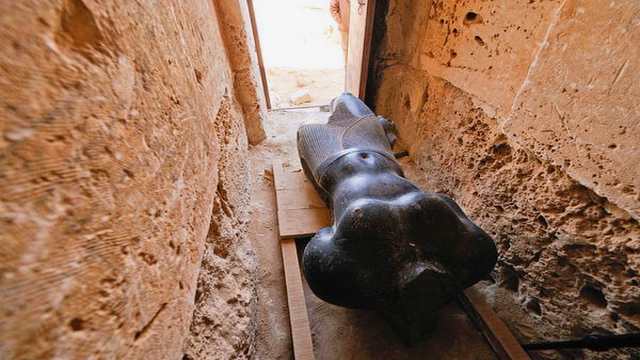Archaeologists are set to begin excavations next week in Egypt, seeking to solve a centuries-old mystery: the final resting place of the legendary lovers Cleopatra and Mark Antony. This ambitious endeavor aims to locate the tombs of the celebrated Egyptian queen and her Roman general, whose dramatic love story has captivated the world for generations.
The Search Begins at Taposiris Magna
The Supreme Council of Antiquities in Egypt announced that the excavation will take place at three specific sites within the temple of Taposiris Magna. This ancient temple, situated near the Mediterranean Sea and close to the coastal city of Alexandria, was constructed during the reign of King Ptolemy II between 282 and 246 B.C. The council’s statement highlighted the historical significance of these locations, which were identified during a recent radar survey of the temple grounds.
Promising Finds and Historical Significance
The radar survey, conducted last month, pinpointed the three sites believed to contain the tombs. Previous excavations at Taposiris Magna have yielded significant artifacts, including an alabaster head of a Cleopatra statue, 22 coins bearing her image, and a mask thought to belong to Mark Antony. These discoveries suggest the temple may indeed be the burial site of the famous duo.
Teams and Efforts
For the past three years, teams from Egypt and the Dominican Republic have been meticulously excavating the temple. Their efforts have uncovered several deep shafts within the temple, three of which are potential burial sites. Given the historical context, archaeologists believe Cleopatra and Mark Antony could be entombed in a similar shaft.
The Lovers’ Tragic End
The tragic end of Cleopatra and Mark Antony has been immortalized through various historical accounts and dramatic retellings. After their defeat in the Battle of Actium in 30 B.C., the lovers chose to end their lives. Mark Antony is said to have fallen on his sword, while Cleopatra reportedly used a poisonous asp to take her own life.
Academic Skepticism
However, not all experts are convinced of the temple’s connection to the lovers. John Baines, an Egyptologist from Oxford University, expressed doubt over Augustus, who defeated Antony, choosing such a distinguished burial site for them. Baines questioned the rationale behind associating the temple of Taposiris Magna with Antony and Cleopatra’s final resting place.
Cleopatra’s Image and Legacy
Zahi Hawass, Egypt’s renowned archaeologist, provided a contrasting perspective. He pointed to the discovery of the Cleopatra statue and coins as evidence against the theory that Cleopatra was unattractive. These artifacts, he argued, reflect a charm and beauty that contradict the conclusions drawn from a Roman coin depicting her with sharp features. In 2007, academics from the University of Newcastle in Britain had speculated that Cleopatra was not particularly attractive based on her portrayal on Roman currency.
Expanding Discoveries at the Temple
Beyond the search for Cleopatra and Mark Antony’s tombs, excavators at Taposiris Magna have made other remarkable discoveries. A large, previously unknown cemetery was found outside the temple enclosure. This cemetery includes 27 tombs and ten mummies, providing valuable insights into the burial practices during the Greco-Roman period. The presence of this cemetery suggests that a person of significant importance, possibly royalty, could indeed be buried within the temple.
Conclusion: A Historical Revelation Awaits
The upcoming excavation at Taposiris Magna holds the potential to answer one of history’s most intriguing questions. If the tombs of Cleopatra and Mark Antony are found, it would be a monumental discovery, offering new insights into their lives and the era in which they lived. As archaeologists prepare to delve deeper into this ancient mystery, the world watches with bated breath, eager to learn more about the fabled lovers whose story has transcended time.

